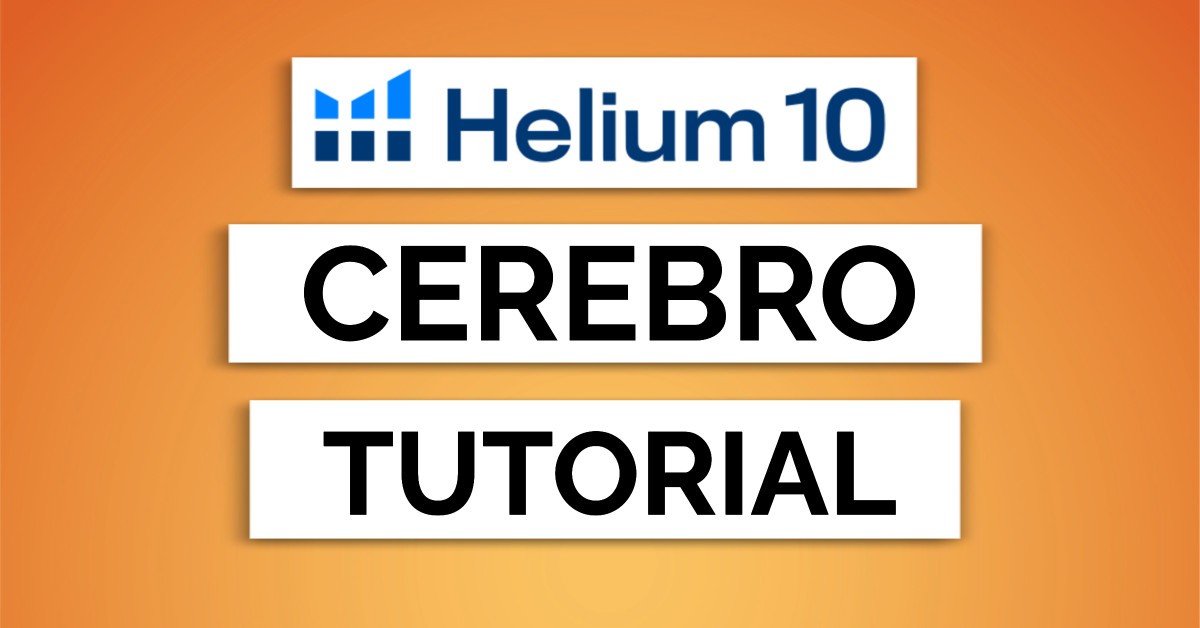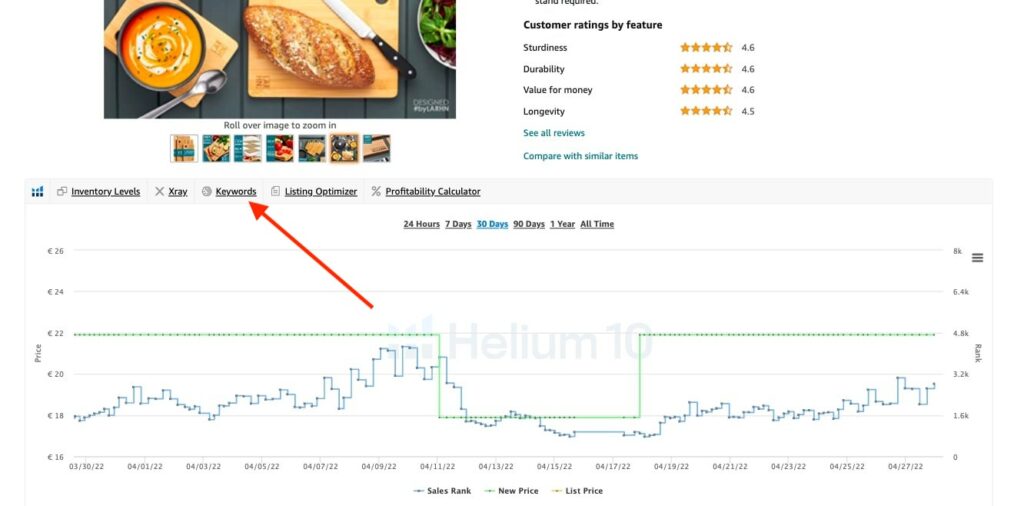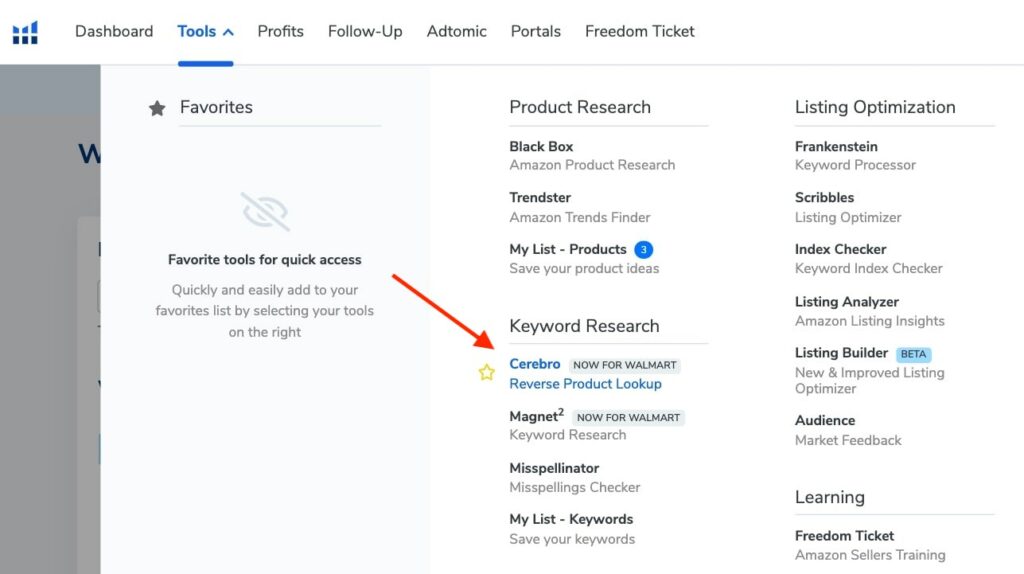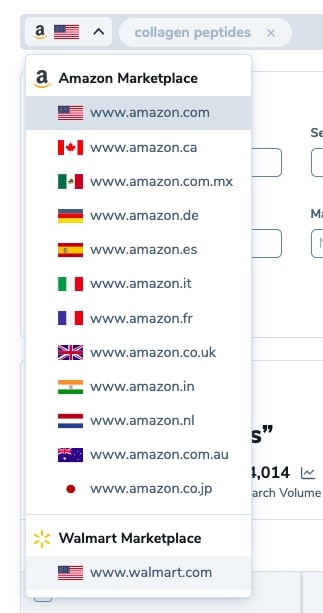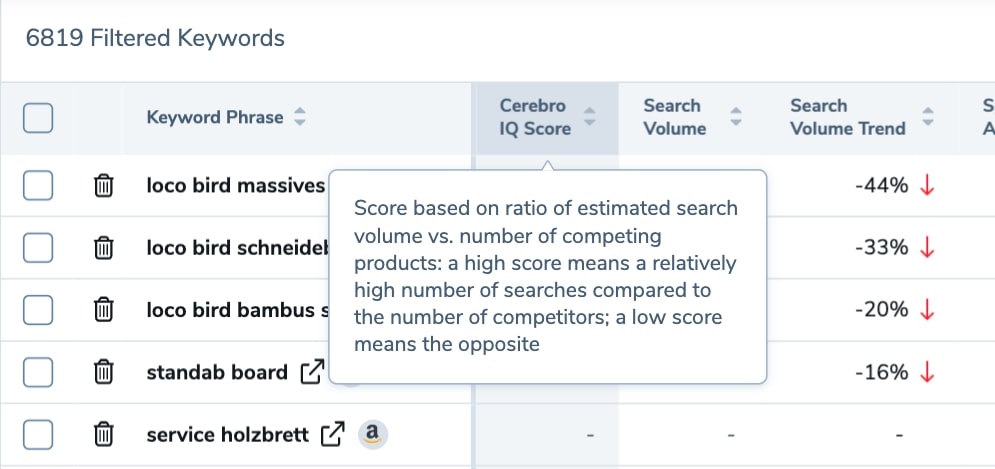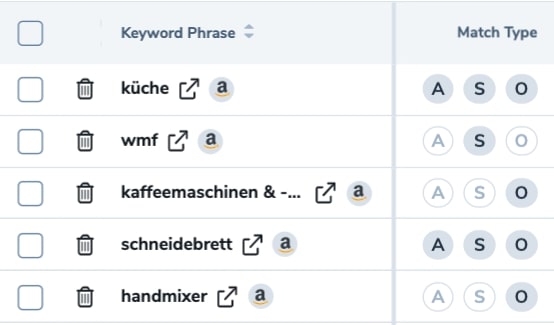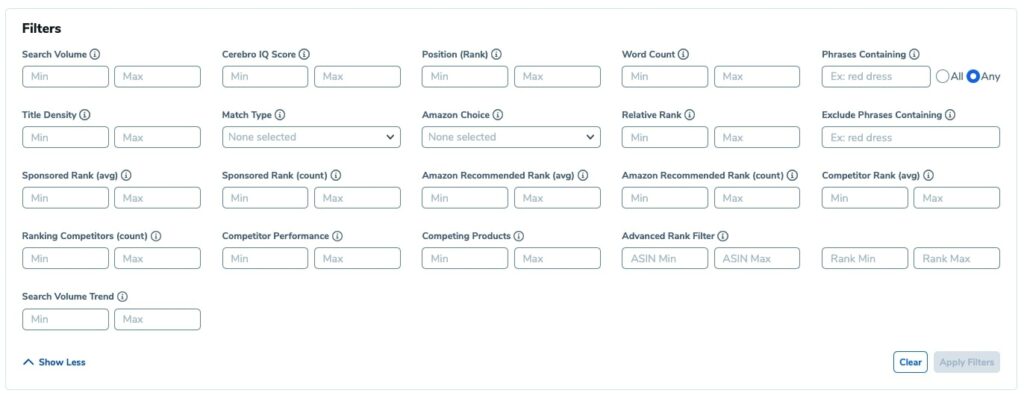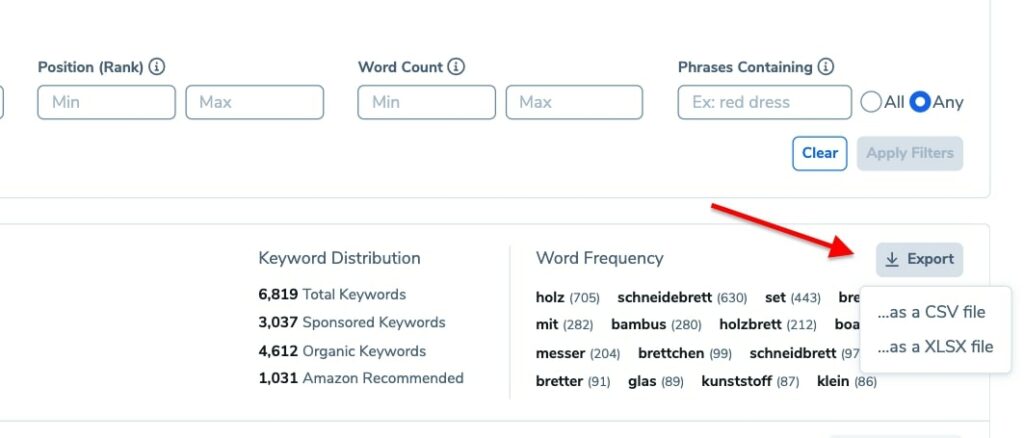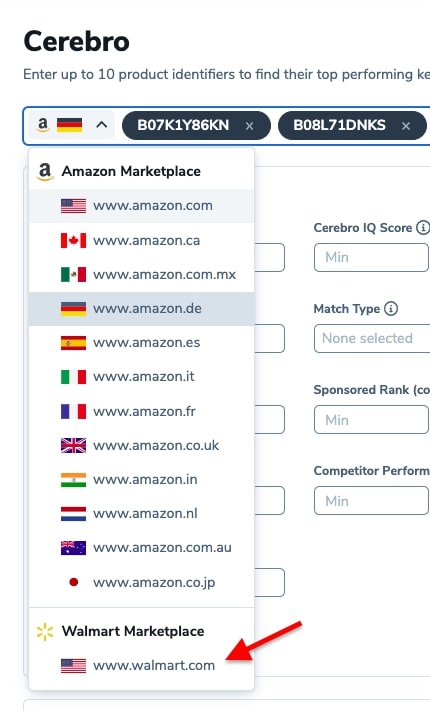Are you wondering what keywords your competitors rank for? If so, you’re thinking the right way – in order to beat your competitors, first, you need to analyze their strategies. And one of the strategies is keywords.
Knowing this information helps to compete on the better-ranking keywords and find keyword opportunities that your competitors might not rank for. It also allows improving your product listing SEO, meaning you get higher chances to rank organically.
Although looking inside a competitor’s listing on keyword-level sounds complicated, Helium 10 Cerebro tools does it in just a few clicks.
In this blog post, you will learn how to use Cerebro – a reverse ASIN lookup tool – to find out your competitors’ keywords and use them to your advantage.
How to use Cerebro by Helium 10?
First and foremost, to use Cerebro, you need to have 1-2 ASINs to use as a base for your search. The more ASINs you add, the more keywords you’ll get in the list.
To add an ASIN, go to an Amazon product listing, copy and ASIN number and paste it to Cerebro:
As an example, we’ll be using a “cutting board” for the Amazon.de marketplace.
Probably the easiest way to access Cerebro is to find this Helium 10 graph below the bullets and click “Keywords” – it will redirect you to Cerebro right away.
Another way is to access it on the Helium 10’s dashboard. At the bottom, click “Tools” and select Cerebro from the list.
Once you access it, you can then copy-paste the ASINs you have selected in the search field at the top. Remember, you can add up to 10 ASINs here.
The more ASINs you apply, the more keywords you are going to get, although we would recommend finding a sweet spot between researching 3-4 ASINs as most of the time you don’t need to have plenty of keywords that you get from 10 ASINs.
Don’t forget to set the right marketplace and click “Get keywords”.
The first thing you will see in this section – here the tool shows the main image of a product, title, and ASIN number.
Then you get detailed information about keyword distribution – how many keywords there are in total, how many of them are sponsored, organic and Amazon recommended.
Sponsored keywords are the ones that this ASIN is using to run paid advertising (PPC) on.
Organic keywords are the ones that customers type in Amazon search and find a product based on that search term.
Amazon recommended keywords are the words Amazon recommends to this product itself for advertising purposes.
The last part of the section is word frequency and it shows what words are repeating the most throughout the keywords.
Finally, frequently bought together displays the products that are usually bought along with the searched product. You can use this information for your own PPC campaigns.
Even though it displays only 3 products, you can click on “View all in Black Box” and have a look at each and every product that people purchased in the same transaction. It doesn’t mean all of them will be relevant to your searched product, keep that in mind.
Also, if you want to explore more competing ASINs, you don’t need to look for them on Amazon. Instead, click on “Get competitors” and Cerebro will provide you with a list of high-ranking competitors. You can select up to 6 ASINs from this list and the tool will add those automatically to your Cerebro search field.
Once you add everything to your search, it’s time to take a look at the actual data.
How to analyze keyword data in Cerebro?
Cerebro provides you with quite a few metrics to evaluate how keywords are performing. However, if you feel overwhelmed and don’t want to analyze every metric, Helium 10 provides you with the Cerebro IQ score. It rates each product based on its popularity and the number of organic searches using those keywords. Basically, the higher the number, the more likely you’re going to rank for that keyword.
Next, you might want to sort out the results by clicking on search volume – it will show you the most searched keywords at the top.
For example, at the first glance, “handmixer” might potentially be a keyword that you might want to add to your listing if you’re selling cutting boards, even though its search trend is slightly decreasing at the moment. But, compared with other metrics, this keyword looks pretty decent.
Moving onto the next one, sponsored ASINs indicates how many products are running PPC on a keyword. The more products like this, the harder it gets to hit the 1st page organically.
Competing products is the number of products indexing for a keyword. Again, the higher the number, the harder it gets.
In order to know how much it takes for a product to start ranking for a specific keyword, take a look at the CPR column. It tells you how many products you would need to sell in 8 days to rank on the first half of page 1.
Title density shows how many products on page 1 contain the keyword in their title.
As for the match type, you can tell what this keyword is ranked for. It can be Amazon recommended, sponsored products or organic (OR all at once).
“A” stands for Amazon recommended, “S” for sponsored and “O” for organic. Also, important to mention, that this column doesn’t have a filter function.
For you to know whether a keyword performs well because it ranks organically or with PPC, you can take a look at sponsored rank and position columns. They indicate how well a product is ranking with either sponsored ads for keywords or organically.
Finally, the last few columns are about your competitors as it’s very important to track the performance of their keywords as well. First, you might want to know which keywords they are potentially missing out on and which one of those are too competitive to even consider adding to your listing.
The competitiveness of a keyword can be defined by looking at the very last column – competitor performance score. It shows how successful on a scale of 10 your competitors’ ASINs are for a specific keyword. The lower the number, the less successful they are, thus there might be a possibility for you to outperform your competition.
By the way, if you’re wondering what (avg) and (count) mean next to some metrics, it’s because we added more than 1 ASIN for this Cerebro search, and yet the tool estimates either the average number or adds the data from both ASINs.
Advanced search filters in Cerebro
Cerebro offers quite a few advanced filters so you can be more specific about the keywords you want to look at.
First of all, you can set the keyword search volume – let’s say, you want to search for keywords with a minimum search volume of 500/month. Or maybe you don’t want to get keywords that are too competitive and so you can set the maximum search volume as well.
Cerebro IQ score helps you to evaluate potential keywords and find less-competitive opportunities as it calculates the search volume of a keyword as well as the number of competing products for that keyword. Here, we would recommend setting a minimum of 500.
Organic ranking is another metric you would want to set a minimum number of searches for. That allows you to choose only those keywords that people are actually typing in the search field when looking for a product.
Word count. Depending on whether or not you want to look for long-tail keywords, you can set the minimum and the maximum number of words. However, don’t forget that different languages have different rules – for example, for the German marketplace, you might want to leave just 1 word per keyword as words in German are compounded.
If you want to exclude specific keywords, let’s say sponsored ones, you do that by setting the necessary match type in one for the fields.
The Amazon choice option lets you filter out those products that have the Amazon Choice badge for given keywords.
One of the best filters there is in Cerebro is excluding phrases that include specific keywords. Here you can be very specific and tell the tool not to display keywords that contain specific words.
Also, the same works with the words you want to include
The rest of the filters just supplements the main metrics available inside the tool, such as ranking competitors, sponsored rank, competing products, etc.
How to export data from Cerebro
Once you have narrowed your keyword down, it’s time to get the list of it.
Just below the advanced filters section, you will see an option to export data. You can do that as a CSV or XLSX file:
Once you select your preferred format, Cerebro will generate and download data to your computer. It might take a few moments to process the data and prepare the file.
The biggest advantage of exporting the data in this way is that you get some additional information about your keywords, such as how your products rank for each keyword, and more.
Helium 10 Cerebro for Walmart
Now Helium 10 Cerebro tool for Amazon keyword research works for Walmart sellers as well. The only thing you need to do to start your Walmart keyword research is to set the right marketplace right here:
Next steps
Check out our full Helium 10 review for more ways how you can use Helium 10 tools.
If you want to sign up and try Helium 10 tools for yourself, we have 2 discount coupon codes that will save you money.
- ORANGE10 coupon code will give you a 10% lifetime discount for any plan
- ORANGE6M20 coupon code will give you 20% off the first 6 months
Apply any of these two at the checkout when signing up.

